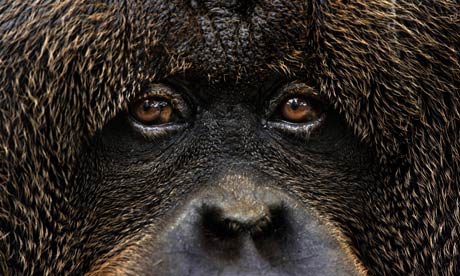TOP STORIES
HPAI outbreaks along the East Asian flyway are related to latitude and poultry density, not to core migration corridor or wetland habitats
A recently published study that uses a newly developed Brownian bridge spatial analysis methodology found that highly pathogenic avian influenza (H5N1 HPAI) outbreaks reported along the East Asian flyway were related to latitude and poultry density but not to the core migration corridor or to wetland habitats used by migratory waterfowl.
These findings suggest that there are temporal mismatches between the timing of reported outbreaks and wild duck movements.
Journal Article Cited
Migration of Waterfowl in the East Asian Flyway and Spatial Relationship to HPAI H5N1 Outbreaks. Avian Diseases. Vol. 54 (2010): 466-476.
More Avian Influenza News
>>> Cold Fronts Linked to European H5N1 Outbreaks [cited journal article here]
Wildlife officers investigate gull, pelican deaths
Wildlife officers are investigating the deaths of a number of pelicans and gulls at Jones' Bay near Eagle Point in Gippsland.
Seven pelicans and 12 gulls were found dead or sick at an area known as The Cut.
Freelance camera man Greg Carter filmed the dead birds and said local residents were distressed at the discovery.
 G&F monitors sheep health
G&F monitors sheep healthWyoming Game and Fish biologists are closely monitoring a small group of sheep in the Jackson bighorn sheep herd for a possible outbreak of pneumonia.
Agency officials said Tuesday that some of the animals in the herd recently have shown signs of the often-fatal disease.
The Jackson herd has struggled with pneumonia outbreaks over the past decade, as have some other bighorn sheep herds in Wyoming, including the Whiskey Basin herd near Dubois.
07 Apr 2010
J Gearino
Photo credit: M Gocke/Star-Tribune
 Ecologists unveil plan for 'barometer of natural life'
Ecologists unveil plan for 'barometer of natural life'An ambitious project to create a "barometer of life" to track the changing fortunes of the natural world will be set out tomorrow by some of the world's leading ecologists.
The plan is for thousands of scientists to collect information on 160,000 of the world's nearly 2 million known species - from great mammals, fish and birds to obscure insects and fungi - chosen to be representative of life on Earth.
The index would more than triple the scope of what is already the world's biggest scheme - the "red list" of extinct and endangered species published by the International Union for the Conservation of Nature's (IUCN) - and would be updated every five years.
08 Apr 2010
J Jowit
Photo credit: A Rogers/AP
TOP READ LINKS FROM LAST WEEK
News
- In the Spotlight – Chronic Wasting Disease Update Reports
- Feds Eye Plum Island Sale
- Backpacked Birds Reveal Who's The Boss [includes audio broadcast]
- Mountain lion population growing
- Sea lions suffering from penile cancer
- Reported Wildlife Mortality Events to the USGS National Wildlife Health Center Updated
- Two raccoons test positive for rabies, pet owners beware
- Only Some Like It Hot: How Birds from Different Populations React to Infections in Their Natural Environment
- Toads can 'predict earthquakes' and seismic activity
- Bear bile, a very profitable business
- Veterinary Pathology - March 2010: 47(2)
- Global Pathogen Distributions: A Win–Win for Disease Ecology and Biogeography
- The prevalence and distribution of Mycobacterium bovis infection in European badgers (Meles meles) as determined by enhanced post mortem examination and bacteriological culture
- A Weighted Surveillance Approach for Detecting Chronic Wasting Disease Foci
OTHER WILDLIFE HEALTH RELATED NEWS
- The week in wildlife [image gallery]
- Emergence of zoonotic arboviruses by animal trade and migration
- Geese tracked to estimate wind farms' impact
- Habitat of elusive Northern squid documented by researcher
- Report reveals rabbit and dormouse threatening Britain's wildlife
- UN Claims Victory In Biodiversity Talks, But Outcome Not Certain
- WCS Releases 2010 Rarest of the Rare List
Fish News
 It Ain't All Bad News
It Ain't All Bad NewsPhoto courtesy of KTLA News





